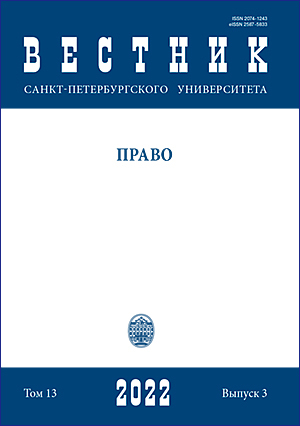Crisis and palingenesis (rebirth) of criminal law in the context of digitalization
DOI:
https://doi.org/10.21638/spbu14.2022.301Abstract
The article reveals how the influence of exponential and combinatorial technological changes has led to a crisis in criminal law, expressed in the inability to perform its basic functions due to impact of a permanently dynamic external environmental. The authors highlight the following fundamental provisions that should be used when making decisions on modernizing criminal law: the emergence of a new (informational) method of committing a crime does not a priori indicate that it is more dangerous than traditional forms, but in many respects indicates the problem of social control lagging behind the development of society and changes in crime; the adaptation of norms of the criminal law to conditions of the information society should not be associated with constructing “digital twins” of traditional criminal law prohibitions; the introduction of appropriate amendments to the content of norms is justified only in cases where the adaptive capacity of criminal legislation to digital crime exhausts itself; the recognition of the use of information technologies as a qualifying feature of a crime in general must comply with the criteria for differentiating criminal liability justified in science. The article separately substantiates that the emergence of a “digital personality” will complete the beginning of the transition from the traditional criminal law of the industrial society of the 20th century to the criminal law of the digital world of the 21st century (Criminal Law 2.0). This is due to the fact that artificial intelligence and “digital personality” will fundamentally change the scope of criminal law protection.
Keywords:
criminal law, criminal policy, informatization, information technology, information security, computer crime
Downloads
References
Downloads
Published
How to Cite
Issue
Section
License
Articles of "Vestnik of Saint Petersburg University. Law" are open access distributed under the terms of the License Agreement with Saint Petersburg State University, which permits to the authors unrestricted distribution and self-archiving free of charge.






